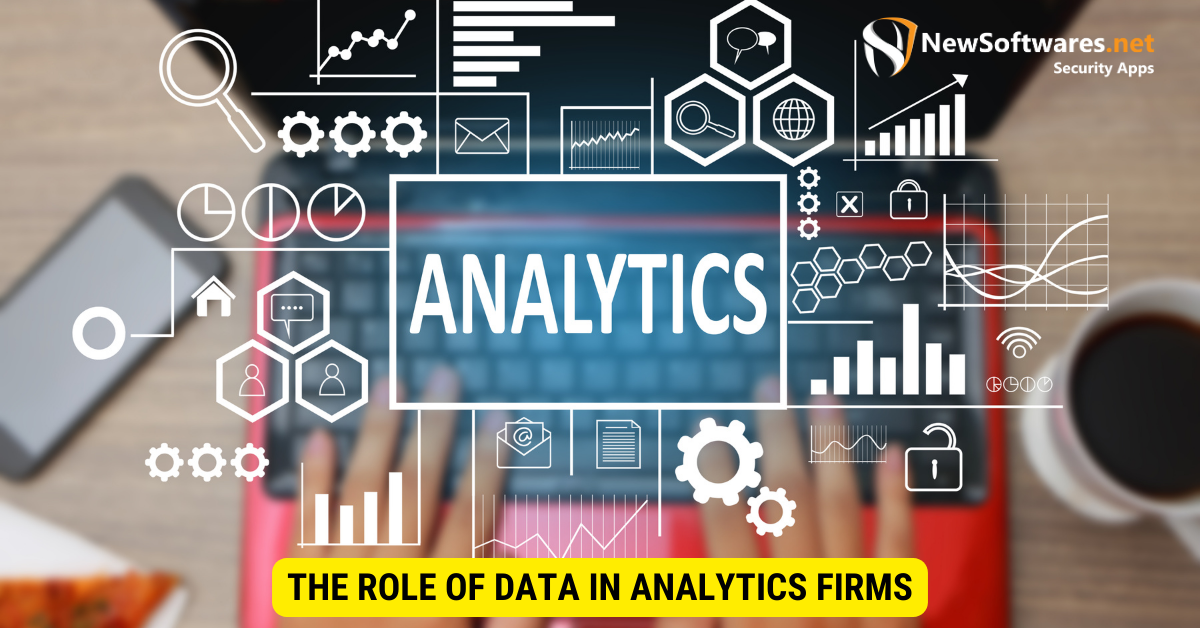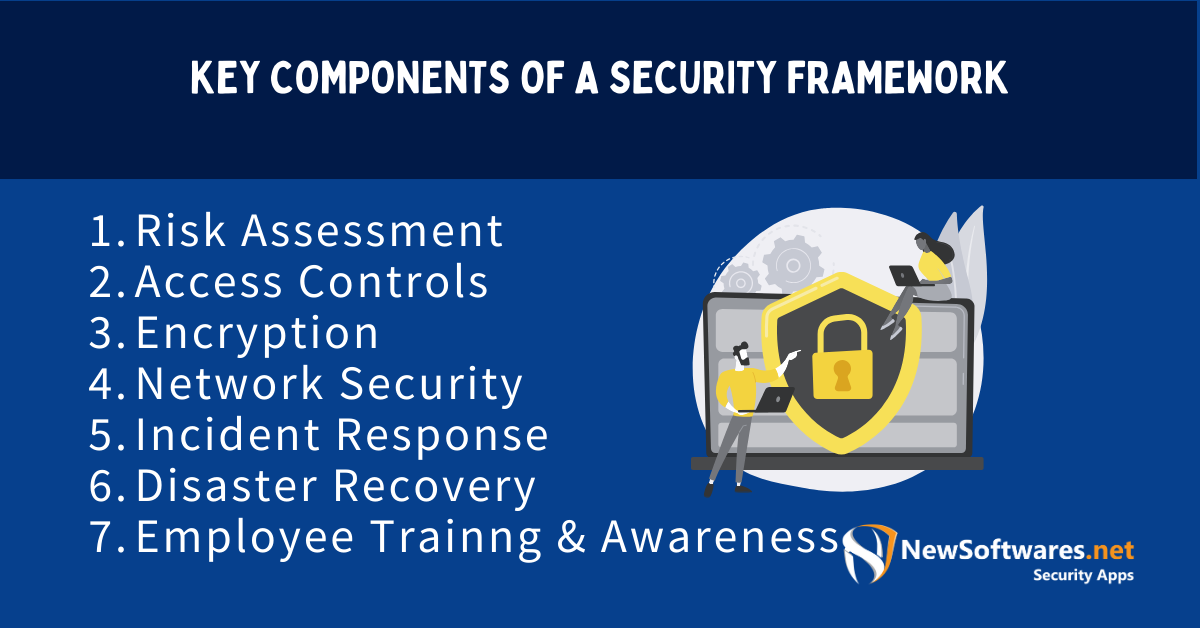To secure a data analytics firm, implement strong encryption, conduct regular security audits, train employees on security best practices, use secure data storage solutions, and maintain up-to-date security software.
In today’s digital age, data security has become a paramount concern for businesses, especially those in data analytics. With increasing cases of cyber threats and data breaches, data analytics firms must prioritize the security of their valuable data. This article will discover various strategies and best practices to help such firms secure their data effectively.
Understanding the Importance of Data Security
Data security is an essential aspect of any data analytics firm. It protects sensitive info from unauthorized access, use, disclosure, disruption, modification, or destruction. In the context of an analytics firm, data security is even more critical as it deals with highly confidential and valuable data. This data may include personal information, trade secrets, intellectual property, and other critical business data.
Data security requires a multi-layered approach combining technical measures, policies, procedures, and employee awareness. By implementing robust security measures, analytics firms can safeguard their data assets and mitigate the risks associated with data breaches.
One of the key elements of data security is encryption. Encoding transforms data into an unreadable format, making it inaccessible to illegal individuals. This ensures that even if data is intercepted, it remains protected. Access controls and user authentication mechanisms are crucial in limiting access to sensitive data. By implementing strong passwords, two-factor authentication, and role-based access controls, analytics firms can ensure that only authorized personnel can access sensitive information.
The Role of Data in Analytics Firms

Data forms the foundation of any analytics firm. It is the raw material that fuels insights and drives business decisions. Without data, an analytics firm would be rendered ineffective. Data encompasses a wide range of information, including customer, financial, operational, and more. Protecting this data is essential for the firm’s reputation and maintaining client trust and compliance with regulatory requirements.
Analytics firms collect vast amounts of data from various sources, such as customer interactions, online transactions, social media, and IoT devices. This data is processed, analyzed, and transformed into meaningful insights that drive business growth. However, with data’s growing volume and complexity, analytics firms face significant challenges in ensuring security.
One of the challenges is the sheer volume of data that analytics firms handle. Storing and securing massive amounts of data requires robust infrastructure and storage systems. Implementing scalable and secure cloud-based solutions can help analytics firms effectively manage their data while ensuring its security.
Another challenge is the diversity of data sources. Analytics firms must integrate data from various systems and platforms, each with security protocols and vulnerabilities. This complexity increases the risk of data breaches and unauthorized access. Implementing data integration strategies prioritizing security and privacy can help analytics firms overcome this challenge.
Potential Risks and Threats to Data Security
There are numerous risks and threats that data analytics firms face when it comes to data security. These may include malicious attacks, unauthorized access, data breaches, insider threats, social engineering, and more. The penalties of these threats can be severe, leading to financial loss, reputational damage, legal implications, and even the firm’s collapse.
Malicious attacks, such as hacking and malware impurities, pose a significant risk to data security. Hackers constantly evolve their techniques, making it challenging for analytics firms to stay ahead of the threats. Implementing robust cybersecurity measures, such as firewalls, intrusion detection systems, and regular security audits, can help mitigate the risk of malicious attacks.
Insider threats also pose an important risk to data security. These threats can come from recent or former staff with sensitive information access. Analytics firms must implement strict access controls, monitor user activities, and provide comprehensive training to employees to prevent insider threats.
Social engineering is another tactic cybercriminals use to improve unauthorized access to data. This involves manipulating individuals through psychological tactics to trick them into revealing sensitive information or granting access to systems. Training workers to recognize and report social engineering attempts can help mitigate this risk.
Data breaches are perhaps one of the most damaging threats to data security. A data breach can result in the revelation of sensitive info, such as customer data or trade secrets, leading to severe consequences for the analytics firm. Implementing data breach response plans, conducting regular vulnerability valuations, and staying updated with the latest security practices can help analytics firms prevent and mitigate the impact of data breaches.
In conclusion, data security is of the greatest importance for analytics firms. By implementing robust security measures, prioritizing employee awareness and training, and staying updated with the latest threats and vulnerabilities, analytics firms can effectively protect their data assets and maintain the trust of their clients.
How To Securing A Data Analytics Firm
Securing a data analytics firm requires a comprehensive security framework encompassing various components and strategies. This framework is a blueprint for establishing and maintaining an effective data security infrastructure.
When it comes to data security, there is no one-size-fits-all solution. Every data analytics firm must carefully assess its unique risks and requirements to develop a robust security framework. This framework should be designed to protect sensitive data, prevent unauthorized access, and safeguard the integrity and confidentiality of information.
Key Components of a Security Framework

A robust security framework consists of several key components. These include Risk Assessment, Access Controls, Encryption, Network Security, Incident Response, Disaster Recovery, And Employee Awareness. Each component plays a vigorous role in maintaining the overall security posture of the firm.
Risk assessment is the foundation of any security framework. It involves identifying potential vulnerabilities and threats, evaluating their potential impact, and defining the likelihood of occurrence. Data analytics firms can prioritize their security efforts and allocate resources effectively by conducting a thorough risk assessment.
Access controls are essential for preventing unauthorized access to sensitive data. This component involves implementing strong authentication mechanisms, such as multi-factor authentication, and enforcing strict access control policies. By limiting access to only authorized individuals, firms can significantly decrease the danger of data breaches.
Encryption is another crucial component of a security framework. It involves converting data into a format that can only be deciphered with the appropriate decoding key. By encoding sensitive data at rest and in transit, data analytics firms can ensure that the stolen information remains unreadable and unusable even if a breach occurs.
Network security focuses on protecting the firm’s network infrastructure from external threats. This component involves implementing firewalls, intrusion detection systems, and other network security measures to detect and prevent unauthorized access or malicious activities. By continuously monitoring network traffic and implementing robust security measures, firms can minimize the risk of network-based attacks.
Incident response and disaster recovery are critical components of a security framework. These components involve establishing procedures and protocols to respond to security incidents and recover from potential disasters effectively. Data analytics firms can minimize the effect of security breaches and ensure business continuity by having a well-defined incident response plan and regularly testing disaster recovery processes.
Worker awareness is often overlooked but is a dynamic component of a security framework. It involves educating employees about security best practices, raising awareness about potential threats, and promoting a culture of security within the organization. By empowering workers to be proactive in classifying and reporting security incidents, data analytics firms can create a strong human firewall against cyber threats.
Implementing Security Measures
To implement the security framework effectively, data analytics firms must accept a multi-layered approach. This involves implementing various security measures such as firewalls, intrusion detection systems, secure coding practices, data encryption, secure data storage, and regular security updates. Firms can create a strong defense against potential threats by layering these measures.
Firewalls act as the first line of defense, monitoring incoming and outward network traffic and blocking illegal access. Intrusion detection systems complement firewalls by actively monitoring network activity for suspicious behavior and alerting administrators to potential threats.
Secure coding practices are essential for developing robust and secure software applications. By following secure coding guidelines and conducting regular code reviews, data analytics firms can minimize the risk of vulnerabilities that attackers could exploit.
Data encryption ensures that sensitive information remains protected, even if it falls into the wrong hands. By encrypting data both at rest and in transit, firms can prevent unauthorized access and maintain the confidentiality and integrity of their data.
Secure data storage includes implementing secure storage solutions, such as encrypted databases or secure cloud storage, to protect sensitive info from unauthorized access. Regular security updates are crucial to address known vulnerabilities and protect the firm’s systems against the latest threats.
Data analytics firms can establish a robust security framework to defend against potential threats by executing these security measures and continuously monitoring and updating them. However, it is important to note that security is an ongoing process, and firms must remain vigilant and adapt their security measures to address emerging threats and evolving technologies.
Employee Training and Awareness
Workers are often the weakest link when it comes to data security. Human error or malicious intent can result in data breaches and other security incidents. Therefore, data analytics firms must invest in worker training and awareness programs.
Importance of Employee Training in Data Security

Proper training helps employees understand the importance of data security and their role in maintaining it. Training programs should cover password hygiene, phishing awareness, secure data handling, incident reporting, and compliance requirements. Regular training sessions and refresher courses can significantly enhance the overall security awareness of employees.
Best Practices for Employee Awareness Programs
Creating an effective employee awareness program requires careful planning and execution. Some best practices include using real-world examples and case studies, conducting interactive workshops, implementing simulated phishing exercises, and providing continuous feedback and support. Making security awareness an ongoing and embedded part of the firm’s culture is essential.
Regular Audits and Compliance Checks
Regular audits and compliance checks are necessary to ensure that the security measures and protocols are effective and current.
The Need for Regular Security Audits
Security audits help identify vulnerabilities, gaps, and weaknesses in the security infrastructure. They provide an opportunity to assess the effectiveness of existing controls, identify areas for improvement, and safeguard compliance with regulatory frameworks and industry standards.
Ensuring Compliance with Data Protection Regulations
Data analytics firms must comply with various data protection regulations and standards, such as the General Data Protection Regulation (GDPR) and the California Customer Privacy Act (CCPA). Regular compliance checks help ensure that the firm’s data handling practices align with these regulations and avoid potential legal consequences.
Incorporating Advanced Security Technologies
Lastly, data analytics firms should incorporate advanced security technologies to bolster their overall security posture.
Exploring Different Security Technologies
There are numerous security technologies available that can enhance data security. These may include advanced threat intelligence systems, intrusion prevention systems, data loss prevention tools, and secure data analytics platforms. Each technology serves a specific purpose in fortifying the firm’s defenses.
Integrating Technology into Your Security Framework
When integrating security technologies, aligning them with the overall security framework and ensuring interoperability is vital. This requires careful planning, evaluation, and selection of technologies that complement the firm’s security requirements.
Key Takeaways
- Encryption is fundamental in safeguarding data.
- Regular security audits help identify and address vulnerabilities.
- Employee training minimizes human-induced security risks.
- Secure storage solutions protect data from breaches.
- Updated security software ensures protection against the latest threats.
FAQs
Q: Why is encryption crucial for a data analytics firm?
A: Given the sensitive nature of analytical data, encryption ensures its confidentiality and integrity.
Q: How often should security audits be conducted?
A: At least annually or after significant changes in infrastructure or processes.
Q: How can employees be a security risk?
A: Untrained employees might fall for phishing attacks, use weak passwords, or mishandle sensitive data.
Q: What are secure data storage solutions?
A: Options include encrypted databases, cloud storage with advanced security features, and physical storage with limited access
Conclusion
In conclusion, securing a data analytics firm demands a proactive and holistic approach. By understanding the importance of data security, establishing a robust security framework, focusing on employee training and awareness, conducting regular audits, and leveraging advanced security technologies, data analytics firms can mitigate potential risks effectively, safeguard their valuable data, and maintain a secure environment conducive to generating actionable insights.
